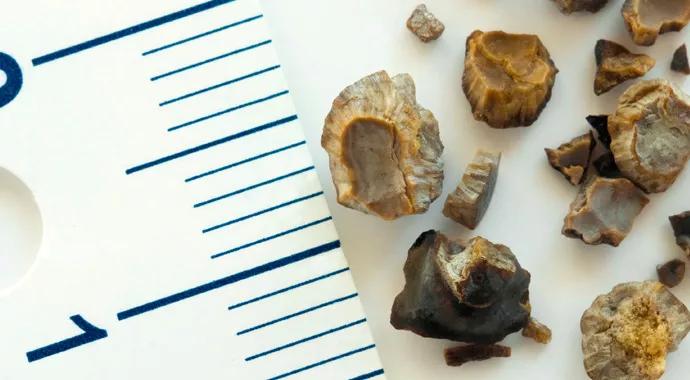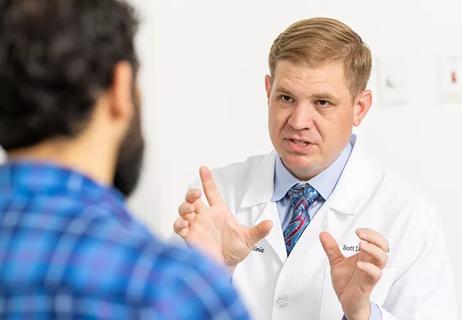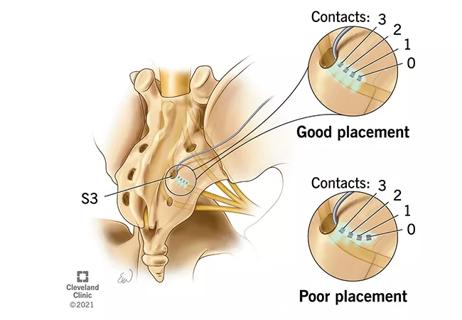Risk factors for recurrent infections identified

By Manoj Monga, MD; Mohamed Omar, MD; Abdullahi Abdulwahab-Ahmed, MD; and Hemant Chaparala, MS4
Cleveland Clinic is a non-profit academic medical center. Advertising on our site helps support our mission. We do not endorse non-Cleveland Clinic products or services. Policy
New evidence indicates that kidney stone extraction in patients with recurrent urinary tract infection (UTI) and asymptomatic renal calculi may not render such patients infection-free.
The relationship between asymptomatic non-obstructive renal calculi and UTI is not well understood. A specific challenge facing urologists is the management of patients with recurrent UTI — defined as three or more UTIs in a year or two or more UTIs in 6 months — who have asymptomatic non-obstructing renal calculi. Stone extraction is often proposed for such patients with the presumption that the stone acts as a nidus for recurrent infections. No studies to date, however, have examined the effect of surgical stone extraction on recurrent UTI.
Informed consent and informed decision-making require that patients have realistic expectations about the outcomes of possible management options. To assess whether stone removal of non-obstructing asymptomatic stones has an impact on recurrent UTI, and to identify predictors of patients who may be rendered infection-free from stone extraction, investigators in Cleveland Clinic’s Glickman Urological & Kidney Institute performed a retrospective chart review of patients with recurrent UTI who underwent surgical stone extraction and were rendered stone-free with the aim of eradicating the infection.
Evaluation of recurrent UTI included imaging (ultrasound screening followed by CT confirmation) by the patient’s referring physician, infectious disease specialist or urologist.
Patients were divided into two groups:
Univariate analysis was performed using Wilcoxon’s signed-rank test and Fisher’s exact test. A logistic regression was used to test variables during multivariate analysis.
One hundred twenty patients with recurrent urinary tract infections and a non-obstructive renal stone were identified from the chart review. Fifty-eight (48 percent) remained infection-free after surgery, with a mean follow-up of 14 months. Sixty-two (52 percent) had a recurrence of infection, at a mean time from surgery of 12 months.
Choice of surgical management was extracorporeal shockwave lithotripsy in 32 percent, ureteroscopy in 7 percent and percutaneous nephrolithotomy in 61 percent. There were no significant differences of treatment modality between the two groups (p = 0.4)
Escherichia coli was the predominant infecting organism in the two groups.
On univariate analysis, there was no significant impact of age, sex, body mass index, prostate size, steroid use, malignancy, diabetes mellitus, immunosuppression, stone composition, stone volume or preoperative creatinine level or type of surgery on risk of recurrence.
A higher risk of recurrence of infections post-procedure was associated with:
Infections consisting solely of E coli were more likely to resolve post-procedure (36 percent vs. 16 percent, OR 0.33, p = 0.01).
On multiple logistic regression, African American race (p = 0.01) and hypertension (p = 0.003) remained significant predictors of unsuccessful clearance of infection, and E coli-only infection (p = 0.01) was a significant predictor of infection clearance.
Among the patients with recurrent UTIs postoperatively, 82 percent had infections with the same preoperative organism, while in 18 percent, there was a change in bacterial species cultured.
The data demonstrate that only about half of patients with recurrent UTIs and asymptomatic renal calculi may be rendered infection-free after stone extraction.
Patients with risk factors for recurrent infections after stone extraction should be counseled that stone extraction may not eradicate their infections. Though E coli is not a urease-producing organism that causes struvite stones, UTIs with this bacteria may resolve with stone extraction. With this knowledge, patients can make informed decisions about proceeding to surgery or choosing other options to manage their recurrent UTIs.
| Figure 1. Laser fiber fragmenting calculus | Figure 2. Basket extraction of stone fragments. |
|---|---|
| Figure 1. Laser fiber fragmenting calculus |

Review the advantages and disadvantages of newer interventions

Pioneering and refining the approach in pyeloplasty, nephrectomy and more

Unlike earlier pills, new drugs do not cause liver toxicity

Male factors play a role in about half of all infertility cases, yet men often are not evaluated

Hadley Wood, MD, shares her vision as the new editor-in-chief of Urology

Study leverages data from the ROSETTA trial

More on the procedure and the institutional experience

Explain some, but not all, of lower utilization